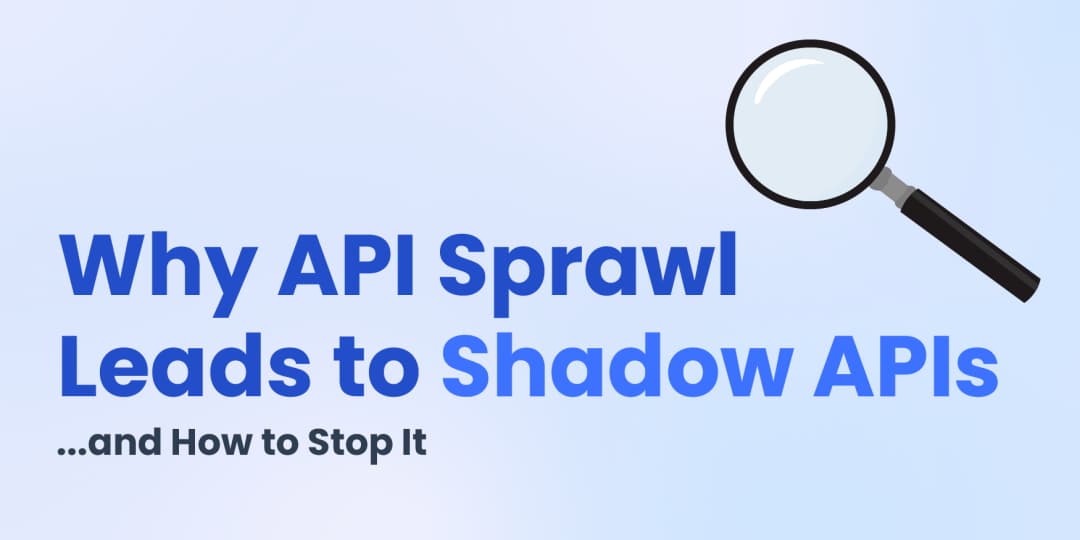API Design | Mar 10, 2023 | 5 min read | By Bill Doerrfeld

Bill Doerrfeld is a tech journalist and content strategist specializing in enterprise software, APIs, and cloud-native technologies. He serves as Editor in Chief of Nordic APIs and contributes to publications including InfoWorld, CIO.com, DevOps.com, LeadDev, and Security Boulevard. With experience interviewing industry leaders and covering emerging tech, Bill helps developer-focused companies shape content and marketing strategies that resonate with technical audiences.
APIs have a lot going for them. They deliver best-of-breed functionality. They are consumable and relatively standardized. And when it comes to finance, APIs enable software developers to integrate impressively robust payments and investment infrastructure into any application. Due to their extensibility, APIs are a prime tool for accelerating financial use cases. It's no surprise, then, that we've seen a sharp uptick in fintech-related API-as-a-product startups in recent years.
The GGV Capital API-First Index lists over 60 API-first companies with $50 million or more in funding. And nearly half of the APIs mentioned land in the fintech category.
There are countless opportunities to use new web-based technologies to accelerate financial operations. Whether it's creating user-friendly banking experiences, transferring cryptocurrency, or aggregating financial accounts, there's usually an API available to service your needs. As we often say, "there's an API for that."
Modern finance is increasingly fast-paced and digitized.
End users also expect flexible payment options — consumers are 63% more likely to shop with merchants that offer their preferred payment options, reports CIO.
APIs can meet these requirements very well, making them a win-win for B2B fintech and end users alike. Below, I'll highlight some innovative API-first startups making waves in fintech and explore why APIs are such a great method for delivering cutting-edge financial experiences.
Many startups are emerging that utilize APIs to deliver specialized financial services. For example, the most obvious is payment processing. Payment providers like Stripe or Rapyd can enable seamless payments within third-party applications. Others include Nium for issuing global payments and Orum for instant payouts. Any company doing business online is bound to monetize it somehow — and these APIs make it feasible to quickly embedded transactions within eCommerce, gaming, online trading, marketplaces, and other areas.

API Products in Fintech
There are also many APIs powering investment-related functions. For example, Alpaca's API enables programmatic stock and cryptocurrency trading. DriveWealth also provides brokerage and micro-share investment capabilities as a service. In addition to enabling transactions, APIs can also inform the due-diligence side of investing too. Alloy, for example, is an API to help underwriters make informed decisions. Similarly, Sardine can be used to decrease fraud, and Truework provides an API to verify income.
Financial APIs can support both end-user applications as well as B2B situations. Utilizing an API like Plaid could help connect a user's financial accounts into one consolidated dashboard. Or, developers could add digital wallets to their platform using Unit's banking-as-a-service features. Conversely, fintech companies can leverage APIs to support an entire business. For example, take payroll — Pinwheel enables you to integrate multiple payroll accounts, and Check can power an entire payroll business. As we've seen, APIs are available for just about all walks of digital finance.

Fintech Powered by APIs
Financial APIs carry a high potential to disrupt the traditional banking model. They are flexible, self-serviceable, and infinitely scalable. For that reason, APIs and financial applications go swimmingly hand in hand. Other benefits of using APIs for financial technology include the following:
Reusable functionality: APIs help engineering teams avoid reinventing the wheel for financial infrastructure that's difficult to build in-house. They abstract the complexity of ACH functionality, FDIC insurance, and other banking registrations and compliances.
Deliver new consumer experiences: Fintech APIs help platforms accept alternative forms of payment, create bank accounts, generate crypto wallets, and even issue cards. These abilities can boost user experience and even open up new revenue streams.
Best of breed: APIs tend to do one thing and do it very well. The API-as-a-product movement is part of a broader trend, as organizations are becoming more composable, building in a style known as MACH (microservices, API-first, cloud-native, headless).
Real-time: Event-driven APIs are necessary to leverage real-time financial data. Up-to-date stock data or cryptocurrency data, for example, can be integrated into applications to help users make important investment decisions.
Flexibility: APIs enable developers to customize unique financial experiences that are more tailored to each customer's needs. This can generate more personalized frontends and decrease feature bloat.
Self-serviceable: Popular APIs have a very refined developer experience, with intuitive developer portals, easy-to-comprehend documentation, and easy signup processes. Their self-service nature enables bottom-up acquisition, helping developers onboard new tools and move rapidly.
Standardized: Financial technology requires a stable contract between the provider and the consumer. Thankfully, web APIs are pretty standardized and follow industry best practices. Most adopt a REST style, and OpenAPI Specification has emerged as a defacto method of defining them. This creates standard schemas that are easy to browse, test, and learn expected behaviors.
Financial infrastructure was previously much more opaque — it was locked down to banks and required deep partnerships to incorporate with third parties. Nowadays, however, cutting-edge technologies are abstracting away this tedious process. Even stalwart financial institutions are going beyond open banking requirements to monetize their core infrastructure. In this new era, startups have a newfound role in making financial technology more accessible than ever before.
That being said, apps are fickle. Businesses come and go. User needs change, as do brands. But what remains is a constant need to conduct business online — this is good news for API providers and probably why payment infrastructure has become such a hot commodity of late. But although business looks bright, payment APIs, and all other fintech APIs for that matter, must respond to rising API security threats to retain stability. They must also carefully finetune their monetization strategy.
Looking to the future, we will likely see more reliance upon niche APIs to deliver financial functionalities. We'll also likely see more advanced artificial intelligence being applied in the backends of financial services to enhance consumer experience and security. For example, automation and AI will be a big boon for securing digital finance, helping to discover fraud, automating vulnerability detection, and enhancing authentication.
 API Design
API DesignAPI authorization defines what an authenticated user or client can do inside your system. This guide explains authorization vs authentication, breaks down RBAC, ABAC, and OAuth scopes, and shows how to implement simple, reliable access control in REST APIs without cluttering your codebase.
 API Design
API DesignRate limiting sets hard caps on how many requests a client can make; throttling shapes how fast requests are processed. This guide defines both, shows when to use each, and covers best practices.
 API Design
API DesignUnmanaged API growth produces shadow endpoints you can’t secure or support. This guide explains how sprawl creates blind spots, the security and compliance risks, and a practical plan to stop it at the source.